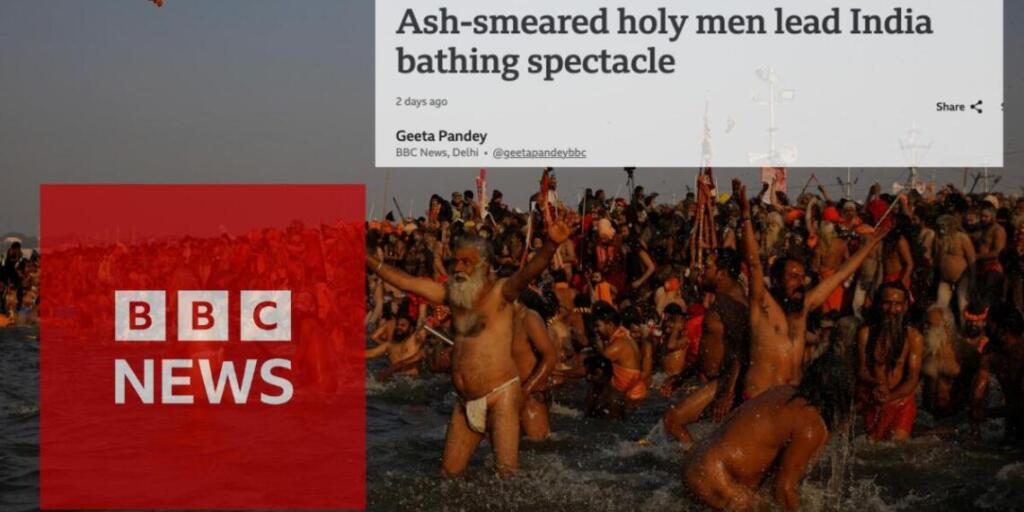The Kumbh Mela is the largest religious congregation in the world. It is held in Prayagraj formerly Allahabad, in India attracting millions of sadhus, ascetics, and devotees. Among them are thousands of Naga sadhus, belonging to a Hindu spiritual school of thought. These Naga sadhus renounce even basic necessities such as clothing to attain the highest spiritual levels. However, the BBC (British Broadcasting Corporation) mocked them in a recent report.
The BBC, reporting on the grand Kumbh Mela in Prayagraj, Uttar Pradesh, had headlined it as, “Naked ash-smeared ascetics to lead India bathing spectacle”. The Naga sadhus were described as “naked” and “ash-smeared” and the Kumbh Mela as a mere “spectacle.” This led to an outrage, and the BBC was heavily criticized. Social media users criticized the network, and the headline was later amended to remove the word “naked” and replace “ascetics” with “holy men.”
The journalist who authored the report, Geeta Pandey, who appears to be of Hindu origin by name, is not new to controversy. In one of her earlier posts, she had created a controversy by describing gangster Atiq Ahmad as a “Robin Hood” who helped the poor.
While mocking Indian ascetics, BBC took a very different approach when reporting on European festivities that had Nudefest. Here, BBC wrote, “Nudefest: Inside Europe’s largest naturist festival” -and this contrast brings out the apparent duplicity of the BBC in covering the lives of different cultures: it mocks Hindu traditions while glorifying nudism in Europe as a celebration in nature.
The Naga sadhus in question are not just ascetics; they are also seen as protectors of religion. These revered figures, who often live in solitude in the Himalayan caves and remote locations, have also taken up arms when necessary. It is believed that when Adi Shankaracharya established four monasteries, he formed groups of Naga sadhus to protect the dharma in any circumstance.
In 1757, when the invader Ahmad Shah Abdali attacked Gokul, 111 Naga sadhus defeated his 4,000-strong army, and they ran away. Hundreds of Naga sadhus gave their lives in the 1857 rebellion for the protection of Queen Lakshmi Bai. More than 745 Naga sadhus died in the war. These acts of sacrifice and valor are only a glimpse of the Naga sadhus’ long history of devotion. Yet, these revered figures are mocked by media outlets like the BBC.
The mocking of Naga sadhus and the Kumbh Mela seems to stem from a deeper disregard for Hindu beliefs and traditions, adding to the long-standing pattern of disrespect toward Hinduism in various sections of the Western media.
